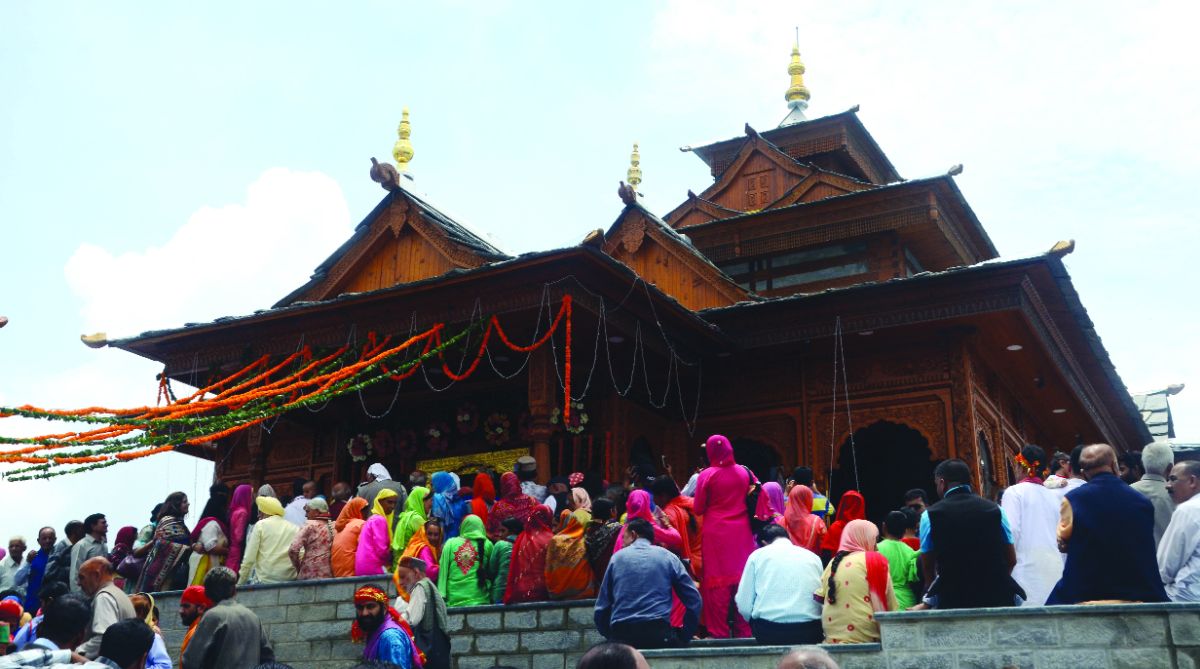J&K CM Omar Abdullah lays stress on Himachal Pradesh-type laws to protect agricultural land
The Chief Minister noted that Himachal Pradesh has adopted a strict policy in this regard and stressed the adoption of a similar policy in J&K.

Tara Devi temple.
An architectural marvel in Shimla district, the 250-year-old Tara Devi temple has become a crowd puller. Already a revered temple and one of the top attractions in the periphery of Shimla town, since its restoration and now that it has been enriched with Pahari architecture, the temple is a must visit spot.
Nestled on a hill top at a height of 1,851 metres above sea level, the temple is about 13 kilometres from Shimla and is accessible both by road and a trekking route from the Kalka-Shimla National Highway. Almost three-and-a-half years of labour has replaced the old simple looking edifice with a phari-architectural masterpiece enriched with Nakkashi (carvings) that is the epitome of the rich culture of the state.
Advertisement
The artistic splendour was given shape by over one-and-a-half dozen artisans handpicked from Rohru (10-11) in Shimla district and Kinnaur district (6-7) to not only give it artistic beauty but also add magnificence to the old temple structure.
Advertisement
Replete with intricate niche images done in the typical ‘pahari’ style using the ancient technique, the Rohru artisans contributed to the woodcarving on deodar wood, while the silver work was done by Kinnauri artisians.
The temple sanctum reinstated the ‘Ashatdhatu’ idols of Tara deity on 20 July with rituals performed by 90 priests. The temple also has statues of Mahakali, Maha Sarsvati, Batuk, Bherav and Maa Bhagwati.
The origin of this temple dates back 250 years, when the Goddess Tara was brought to Himachal from West Bengal. The temple was originally built by the erstwhile Keonthal estate ruler Giri Sen whose fort still exists at Junga. Tara Devi is ‘Kuldevi’ of Sen Vansh Kings. However, the temple withered away with the passage of time.
Former Congress Chief Minister Virbhadra Singh (2012-17) is known to have played an important role in its restoration work.
The temple has been run by a government controlled Tara Devi Trust since 1987. The temple management is taken care of by Himachal Pradesh Government under, ‘Himachal Pradesh Hindu Saarvajnik Dharmik Sanstha aur Poorav Vinyas Adhiniyam 1984.’
There’s a tree outside the temple where people pray to fulfill their wishes and dreams. The temple is located away from the humdrum of urban life, surrounded by a serene ambience.
Large numbers of tourists are flocking to this architectural marvel, said the temple priest, Anil Sharma, adding that there are further plans for the development of the campus as well.
“Over 10,000 devotees throng the temple on monthly basis and the crowd increases especially during festive seasons. On Sundays and Tuesdays Bhandara is organised where food or Prasad is served to the devotees which is mostly organised by those devotees who commit to offer ‘Bhandara’ after they get their wishes are fulfilled,” he said.
There is a long waiting list for the person who wants to give ‘Bhandara’. In fact the list is so long that anyone seeking a date for ‘Bhandara’ will have to wait seven years for their turn. Sharma said a large number of worshippers come not only from different parts of India but there are several foreign devotees too.
Advertisement